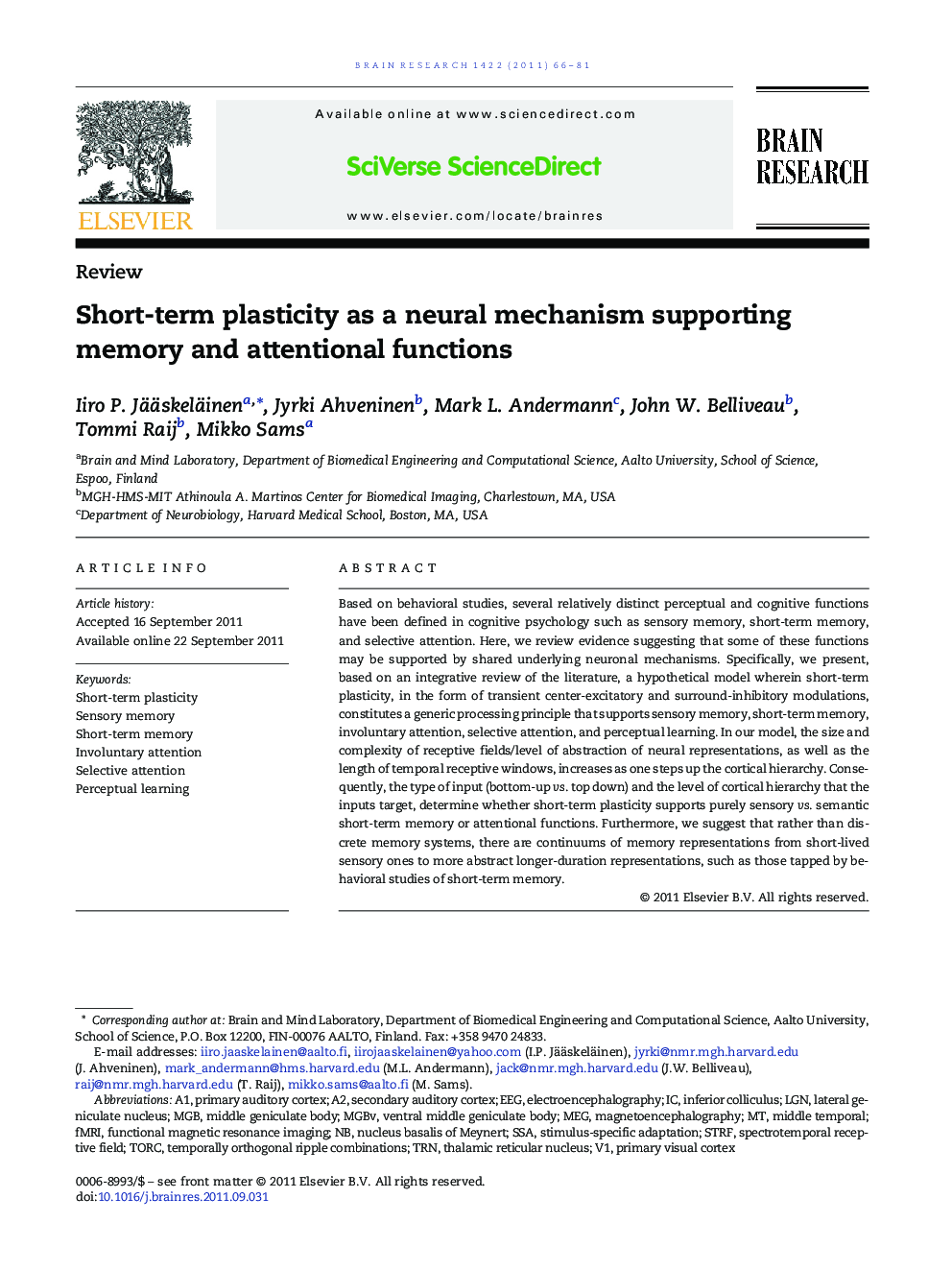| Article ID | Journal | Published Year | Pages | File Type |
|---|---|---|---|---|
| 4325578 | Brain Research | 2011 | 16 Pages |
Based on behavioral studies, several relatively distinct perceptual and cognitive functions have been defined in cognitive psychology such as sensory memory, short-term memory, and selective attention. Here, we review evidence suggesting that some of these functions may be supported by shared underlying neuronal mechanisms. Specifically, we present, based on an integrative review of the literature, a hypothetical model wherein short-term plasticity, in the form of transient center-excitatory and surround-inhibitory modulations, constitutes a generic processing principle that supports sensory memory, short-term memory, involuntary attention, selective attention, and perceptual learning. In our model, the size and complexity of receptive fields/level of abstraction of neural representations, as well as the length of temporal receptive windows, increases as one steps up the cortical hierarchy. Consequently, the type of input (bottom-up vs. top down) and the level of cortical hierarchy that the inputs target, determine whether short-term plasticity supports purely sensory vs. semantic short-term memory or attentional functions. Furthermore, we suggest that rather than discrete memory systems, there are continuums of memory representations from short-lived sensory ones to more abstract longer-duration representations, such as those tapped by behavioral studies of short-term memory.
► We review the literature on short-term plasticity and perceptual/cognitive functions. ► Short-term plasticity may support both memory and attentional functions. ► Short-term plasticity might also be a prerequisite for perceptual learning.
